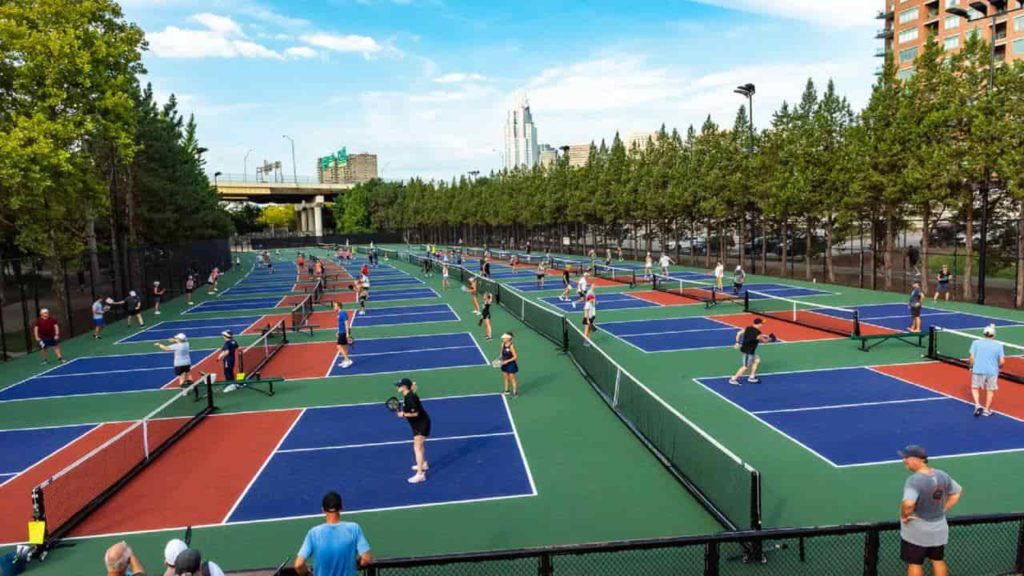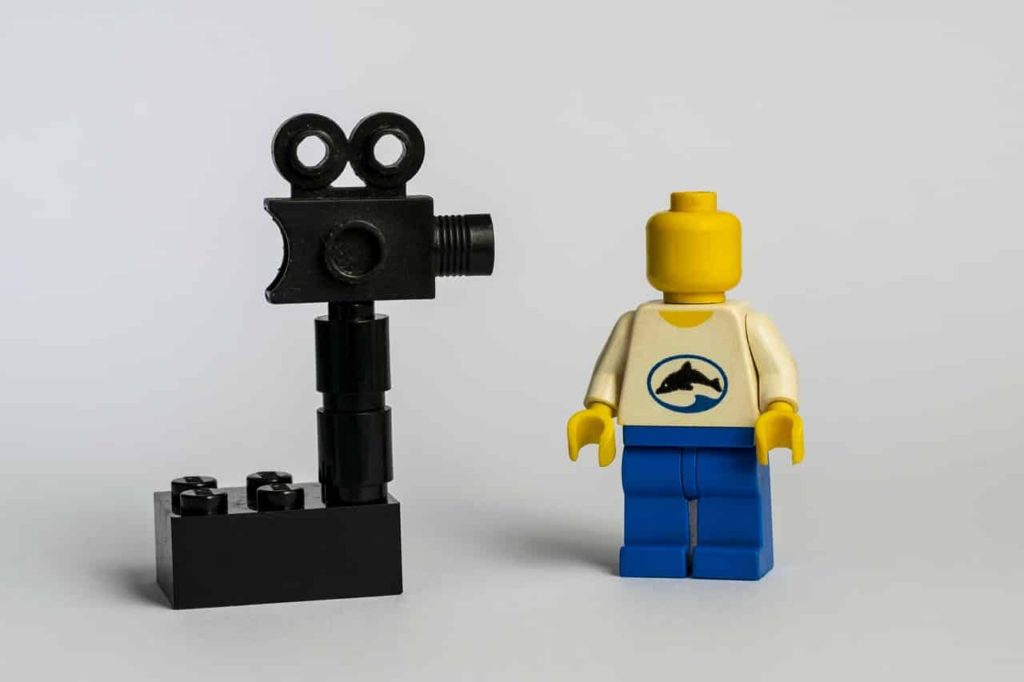Introduction
Tracking progress is an essential aspect of any sport, including Pickleball. When playing this popular game, players need to keep track of their progress to identify weaknesses and strengths, set goals, and stay motivated. In this article, we will explore the importance of tracking Pickleball progress and how to do it effectively.
Explanation of Pickleball
Pickleball is a fast-paced game that can be played both indoors and outdoors on a court similar in size to a badminton court.
The game involves two or four players using paddles to hit a plastic ball back and forth over the net until one team fails to return it. Points are scored when the ball lands out of bounds or if the opposing team fails to return it.
Pickleball is gaining popularity worldwide due to its fun and social nature; it’s easy for beginners to learn yet challenging enough for advanced players. The sport has been proven beneficial for health, both physically and mentally.
Importance of Tracking Progress in Pickleball
Tracking one’s progress in pickleball is essential as it helps identify areas that need improvement while also providing motivation through a sense of achievement when targets are met. Tracking can be done through scorecards or recording game stats during play sessions or reviewing recorded videos afterward.
By keeping track of scores from each game played regularly over some time period, you will get insights into how your skills have developed over time. This information can help you determine what you need more practice with or what strategies work best for your playing style.
In addition, tracking allows players to set goals and measure their success against those goals; this is crucial because setting realistic yet challenging goals can help increase motivation levels significantly. Whether beginner or advanced level player, tracking pickleball progress consistently should always be a top priority.
How to Track Pickleball Progress
Use of Scorecards
One of the most straightforward ways to track your progress in pickleball is by using a scorecard. You can use a pre-printed scorecard or create your own. Scorecards allow you to record the winning and losing scores of each game played, as well as the duration of each game.
Additionally, you can keep track of your serving successes in this manner, which can help with strategy later on. The process for using a scorecard is simple: mark down each point won by you and your partner onto the card through the duration of each game or match.
At the end, calculate your win/loss percentage for that particular day or week based on how many games were won versus lost throughout that time period. This is an effective way to identify trends and patterns in your playing style.
Recording Game Stats
To take things a step further, consider recording more specific stats about your gameplay performance such as ace serves, volley winners, unforced errors etc. Recording these statistics will give you a clearer picture of where you excel and where you need improvement. For instance, if you are struggling with unforced errors frequently but don’t realize it until analyzing stats after matches/games; this concrete data may motivate changes in strategy or mental focus during future games to reduce mistakes. This type of detailed information allows players to effortlessly identify specific areas they need to work on improving during practice sessions with coaches, practice partners or teammates alike- making for productive training sessions tailored specifically towards one’s needs.
Video Analysis
Another tool that can be used for tracking progress in pickleball is video analysis. Recording yourself playing provides an objective view of how well (or poorly) you’re doing out there!
By watching video footage post-game/match-play session playback at home; players can see their physical movements and progress, which can help to identify areas requiring improvement such as footwork, reaction time, and body positioning. Reviewing footage of your gameplay also provides an excellent opportunity for self-reflection.
You may pick up on bad habits or tendencies in your play style that you may not have noticed previously. With this newfound awareness, it’s easier to make changes that better your game in the future!
The Importance of Tracking Pickleball Progress
Tracking progress in pickleball is essential for players who want to improve their game. Whether you are a beginner or an advanced player, keeping track of your progress can help you identify areas where you excel and areas where you need to improve. This information provides valuable feedback that can be used to create a more targeted training plan.
Helps Identify Weaknesses and Strengths
Tracking your pickleball progress enables you to identify your strengths and weaknesses. By analyzing your performance, you can pinpoint areas where you excel and those that need improvement. For instance, if you notice that your serves seem to win fewer points than other shots, this suggests that your serve is an area where improvement may be needed.
Similarly, if you’re losing points when playing at the net, there’s a great chance that your volleying needs work. By identifying these weaknesses, players can focus more on improving these specific skills rather than wasting time practicing other aspects of the game they have already mastered.
Provides Motivation
Tracking pickleball progress also provides motivation for players as they see their performance gradually improving over time. When we see positive results from our efforts, it encourages us to work harder towards our goals.
Every small win becomes a driving force for bigger wins in the future. Additionally, tracking progress helps keep players excited about their next game by seeing how far they have come and how much they have accomplished since starting out.
Facilitates Goal Setting
Goal setting is vital for anyone wanting to succeed in any area of life including pickleball. Tracking progress facilitates goal setting by providing clear data on current performance levels allowing individuals to set realistic goals based on past experiences. For instance, if you want to improve your lob, then tracking points won when playing a lob will provide guidance on what needs to be done to achieve the goal. Do you hit your lobs too short? Do you overhit your lobs? Do you lose every point you play when you throw in a lob? Knowing the answers to these questions will improve your shot selection as well as know what you need to do to win more points when you play a lob.
Tracking pickleball progress enables players to identify areas where they need improvement, provides motivation for continued efforts with each game, and facilitates goal setting by using past experiences as a guide. Therefore, anyone who wants to improve their game should consider tracking their progress regularly.
Tracking Progress for Different Levels of Playing
Beginner Level: Starting Out on the Right Foot
If you are new to playing pickleball, you may be wondering how to track your progress effectively. The good news is that there are a few simple ways to do this.
For example, you can start by recording the number of serves that make it over the net during a game. Alternatively, you could keep track of points won or missed shots.
Another way to track your progress as a beginner is to seek feedback from more experienced players. This can help you identify areas where you need improvement and set achievable goals for yourself.
Additionally, video analysis can be very helpful in identifying areas for improvement in your form and technique. Watching yourself back after playing and then comparing your footage to better players, can help highlight what you’re doing wrong and how it should look. Ultimately, tracking progress at the beginner level should focus on building foundational skills and improving consistency in your game. Do you forget to follow through on your backhand? Are you in the right court position for the next shot?
Intermediate Level: Refining Your Game
At the intermediate level, tracking progress becomes more focused on refining your skills and strategies. One effective way to do this is by recording game stats such as number of aces or unforced errors committed during a match. How many forehands did I miss per game? Backhands? Volleys?
Another important aspect of tracking progress at an intermediate level is goal setting. For example, if you want to improve your backhand shot, set a specific goal such as hitting 10 backhands successfully in one practice session.
Feedback from other players and coaches also becomes more important at this stage. Seek out constructive criticism and incorporate it into your practice routine.
Advanced Level: Fine-Tuning Your Game
For advanced players looking to fine-tune their game, tracking progress becomes even more crucial. This can include analyzing video footage of matches or practices to identify areas for improvement in technique or strategy. Goal setting remains an important part of progress tracking at this level as well.
However, goals should be even more specific and challenging than those set at intermediate or beginner levels. Seeking out feedback from highly skilled players and coaches can help advanced players continue to refine their skills and stay at the top of their game. Am I hitting the ball cross court when I should have played it down the line? Am I hitting every serve to my opponents forehand instead of their weaker backhand side? Is my shot placement predictable?
Conclusion
After reading this article, you should now have a good understanding of the importance of tracking progress in pickleball. By using scorecards, recording game stats, and analyzing video footage, players can identify their weaknesses and strengths while also setting goals for improvement.
Whether you are a beginner or an advanced player, tracking progress will provide motivation to continue playing and improving your skills on the court. By making small improvements over time, players can see significant progress and become more confident in their abilities. Once you see yourself make real improvement, you start to wonder, “how good can I get at this?”
So, if you are not already tracking your pickleball progress, it is time to start! Not only will it help you become a better player but it will also make the game more enjoyable.
Remember to set achievable goals and celebrate small victories along the way. Keep playing and keep improving – who knows where your pickleball journey might take you!





